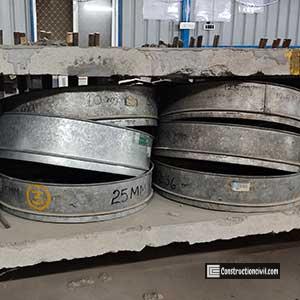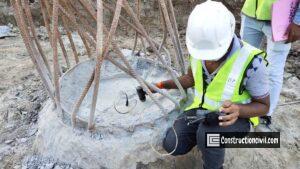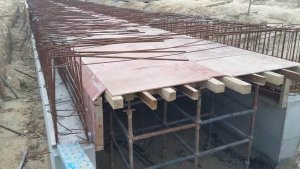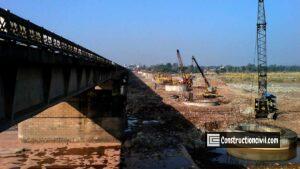The sieve analysis of coarse aggregate test is a fundamental and essential test for all coarse aggregate in field laboratories and is known as the gradation test. With the help of sieve analysis of course aggregate test, we can determine the particle size distributions within a given sample for aggregate specifications verification with design requirements and production control requirements.
Coarse Aggregate:
Aggregate sizes of more than 4.75 mm are called coarse aggregate.
- Uncrushed gravel or stone results from the natural disintegration of rock.
- Crushed gravel or stone results from crushing gravel or hard stone.
Also, Read: Determination of Sieve Analysis For Fine Aggregate
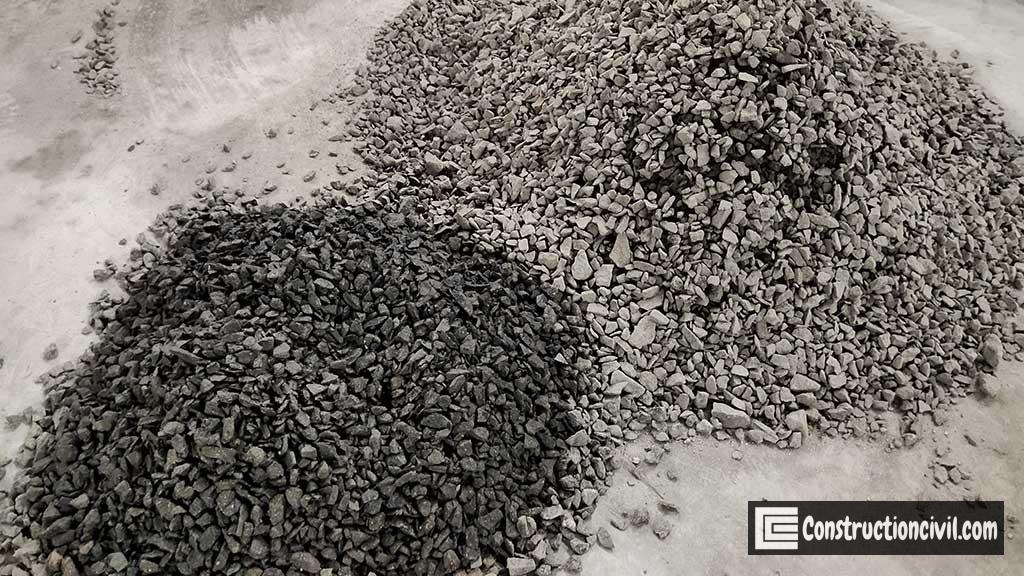
Also, Read: Concrete Ingredients – Important Properties and Tests
Sieve Analysis of Coarse Aggregate Test Objective:
- The sieve analysis of coarse aggregate test indicates the size distribution of coarse aggregate particles in a given coarse aggregate sample.
- The fineness modulus is the indication of the mean size of the particles. The fineness modulus is used to grade the given aggregate.
- We can calculate relationships between different aggregate or aggregate mixes from the gradation data to check suitability with such blends and to anticipate trends during production by plotting gradation curves.
- A change in the fineness modulus value of coarse aggregate indicates a change in the source material, affecting the workability of concrete.
Sieve Analysis of Coarse Aggregate Test:
Sieve Analysis of Coarse Aggregate Test Apparatus:
- IS sieve (size 40mm, 20mm, 12.5mm, 10mrn, 4.75 mm and 2.36mm with lid & pan)
- Oven
- Balance 0.1 g accuracy
- Tray
- Brush
- Mechanical sieve shaker
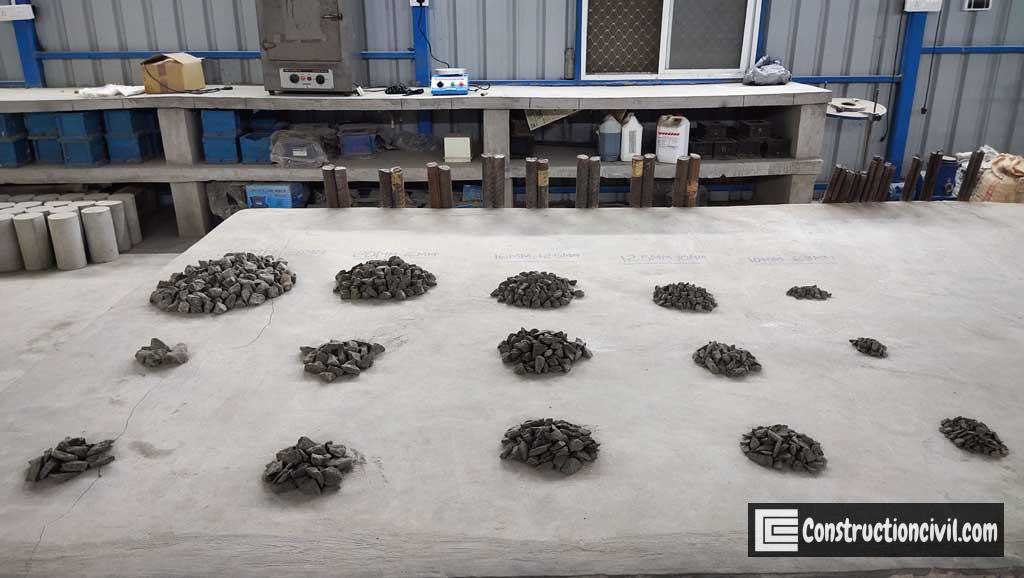
Also, Read: Properties of Concrete – Introduction to Good Concrete Practice
Sampling for Sieve Analysis of Coarse Aggregate Test:
As per IS 2386, the weight of the coarse aggregate sample should not be less than the specified weight given in the following table.
| Maximum Size Present (mm) | Minimum Wt. of Sample Dispatched (Kg) |
| 63 | 100 |
| 50 | 100 |
| 40 | 50 |
| 25 | 50 |
| 20 | 25 |
| 16 | 25 |
| 12.5 | 12 |
| 10.0 | 06 |
| 6.30 | 03 |
Also, Read: Design Mix of Concrete – Detailed Procedure With Calculation
Minimum Weight of Sample for Sieve Analysis:
The sample for sieve analysis of coarse aggregate test shall be prepared from the larger sample either by quartering or using a sample divider. It should be in air-dry condition, either by drying at room temperature or heating at 100°C – 110°C before weighing and sieve analysis. As per IS 2386, the minimum weight of the sample taken for sieve analysis should be as per the following table.
| Maximum Size Present (mm) | Minimum Wt. of Sample To Be Taken (Kg) |
| 63 | 50 |
| 50 | 35 |
| 40/31.5 | 15 |
| 25 | 5 |
| 20/16 | 2 |
| 12.5 | 1 |
| 10.0 | 0.5 |
| 6.30 | 0.2 |
| 4.75 | 0.2 |
| 2.36 | 0.1 |
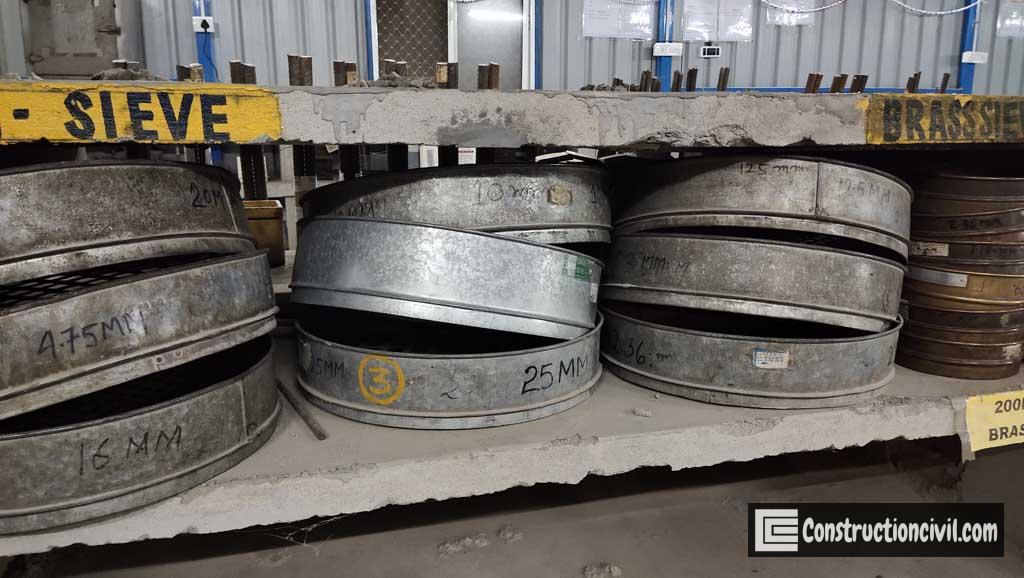
Also, Read: Factors Affecting Strength of Concrete – Construction Civil
Maximum Weight of Retained Sample for Sieve Analysis of Coarse Aggregate Test:
It is possible to bending of sieve during sieve analysis of coarse aggregate test due to the overloading of samples, and to avoid such kind of incidence, we have to follow some guidelines as mentioned in IS 2386. The maximum permissible amount of retained coarse aggregate sample should be as follows.
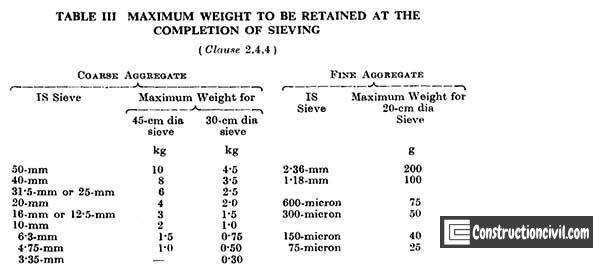
Sieve Analysis of Coarse Aggregate Test Procedure:
- Take 5 kg of representative dried sample out of 10 kg by the quartering method.
- Arrange the sieve set in such a manner so that the screen size of the opening decrease with each sieve down to the bottom-most sieve, which has the smallest opening size screen.
- Nest all the sieves in order of decreasing size of the screen opening from 40mm at the top, and after that 20mm, 12.5mm, 10mm, and 4.75mm sieve, the pan is fixed to the bottom and begin agitating and shaking the sample for a sufficient amount of time.
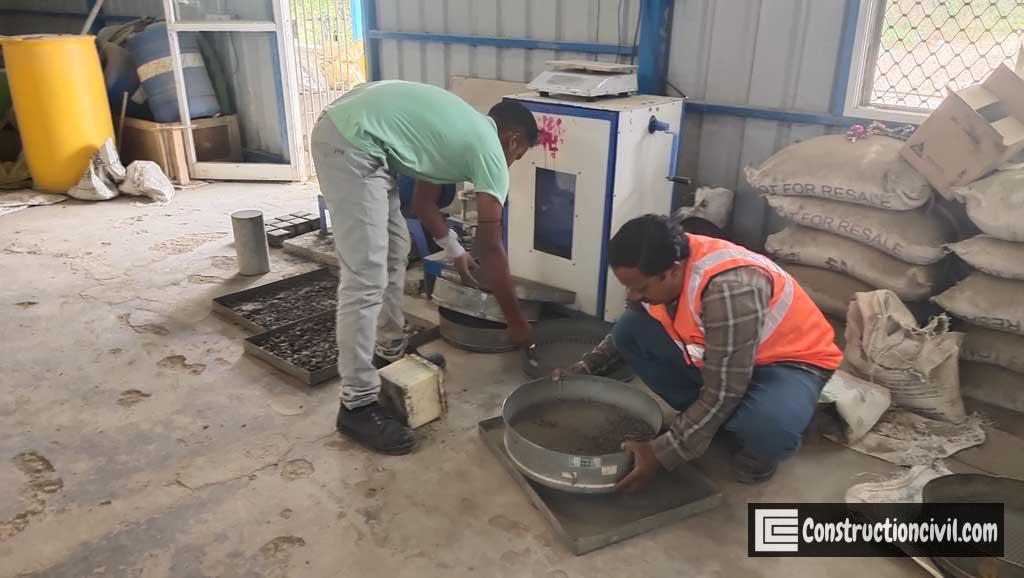
Also, Read: Concreting in Construction – Planning and Execution Summary
- Manual Sieving:
- Each sieve with the sample must be shaken manually over a clean tray until not more than a trace passes or at least two minutes.
- Sieving must be done in various directions with regular shocks to keep the material moving across the sieve’s surface, constantly shifting the moving directions of the aggregate sample.
- The aggregate sample should not be pushed manually through the sieve screen, although placing particles on sieves coarser than 20 mm is permitted.
- Any lumps present in the sample can be broken manually by applying slight pressure with fingertips against the sieve’s side.
- Mechanical Sieving:
- Put 5 kg of sample into the top of the sieve, close the top sieve with a top cover, and then the whole sieve set is placed into the sieve shaker and shaken automatically.
- Sieving is carried out in a sieve shaker for not less than 10 minutes.
- At the end of sieving, find the mass of coarse aggregate material retained on each sieve, together with any material cleaned from the mesh, shall be weighed with the help of a balance of 0.1 g accuracy.
- The final total weights of the retained sample on each sieve should be within 0.3% of the original weight of the sample taken before starting sieve analysis of coarse aggregate test.
- Calculations are presented in the observation, and final results are indicated in the tabular column.
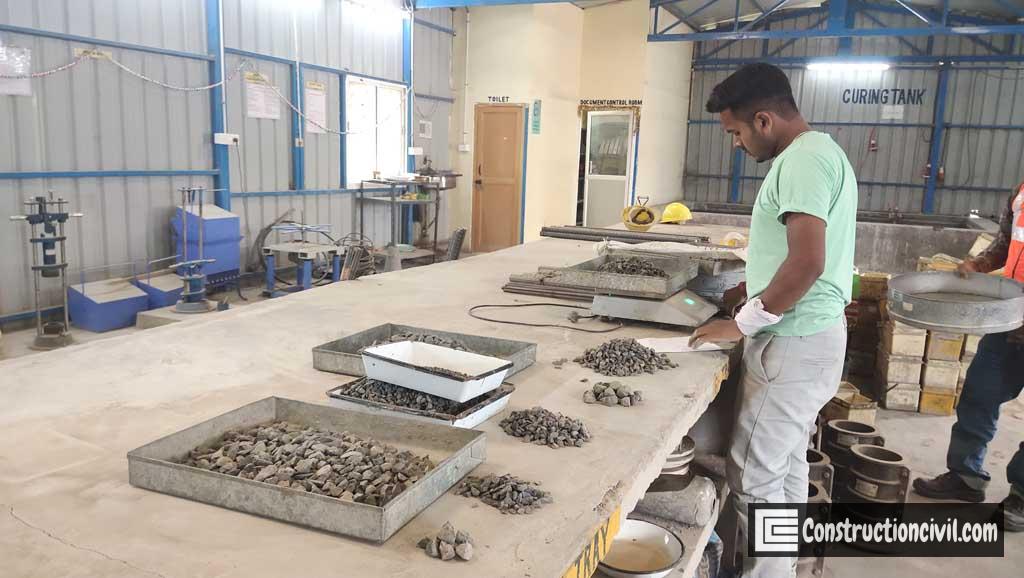
Also, Read: Laboratory Test on soil – Procedures and Objective
Reporting of Results:
Percentage passing for single-Sized aggregate of nominal size and percentage passing for graded aggregate of nominal size shall be as per the following table of IS 383.

- The cumulative percentage passing by weight of the total coarse aggregate sample through each of the sieves to the nearest whole number; or
- The percentage passing by weight of the total sample through one sieve and retained on the next smaller sieve to the nearest 0.1%
- Retained (%) =( Weight retained / Weight of Sample taken)x100
- Cumulative Percentage passing = 100 – Cumulative Percentage weight retained
- Fineness Modulus (FM) = {sum (cumulative % retained) + 500} / 100
Example of Sieve Analysis of Coarse Aggregate Test:
Individual Gradation of 20mm Aggregate (Single Size):
Wt. of Sample Taken: 9000 gm
| Sieve Size (mm) | Retained Wt. (gm) | Retained % (Col.IIx100/W) | Retained % Cumulative | % Passing (100-Col.IV) | Limit as per IS:383 |
| I | II | III | IV | V | |
| 40 | 0 | 0 | 0 | 100 | 100 |
| 20 | 227 | 2.52 | 2.52 | 97.48 | 85-100 |
| 12.5 | – | – | – | – | – |
| 10 | 7389 | 82.10 | 84.62 | 15.38 | 0-20 |
| 4.75 | 1350 | 15.00 | 99.62 | 0.38 | 0-5 |
| Pan | 34 |
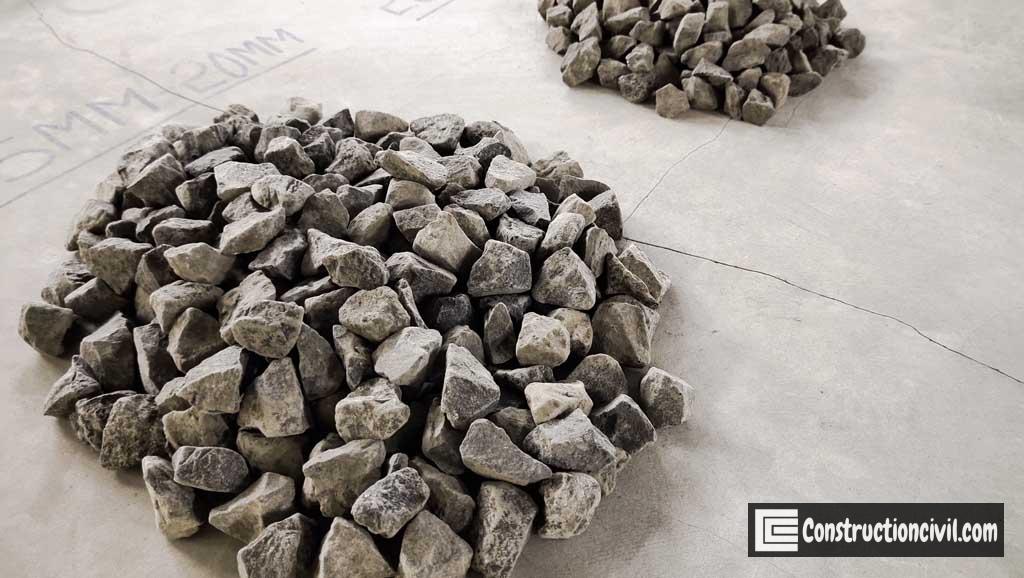
Individual Gradation of 10mm Aggregate (Single Size):
Wt. of Sample Taken: 6000 gm
| Sieve Size (mm) | Retained Wt. (gm) | Retained % (Col.IIx100/W) | Retained % Cumulative | % Passing (100-Col.IV) | Limit as per IS:383 |
| I | II | III | IV | V | |
| 12.5 | 0 | 0 | 0 | 100 | 100 |
| 10 | 474 | 7.90 | 7.90 | 92.10 | 85-100 |
| 4.75 | 4856 | 80.93 | 88.83 | 11.17 | 0-20 |
| 2.36 | 637 | 10.62 | 99.45 | 0.55 | 0-5 |
| Pan | 33 |
Combined Gradation of 20mm Graded Aggregate:
- Blending Percentage of 20mm Aggregate: 60%
- Blending Percentage of 10mm Aggregate: 40%
| Sieve Size (mm) | % Passing of 20mm Aggregate | % Passing of 10mm Aggregate | Sum of % Passing of 20mm graded Aggregate | Limit as per IS:383 |
| I | II | III | IV = II+III | |
| 40 | 60 | 0 | 100 | 100 |
| 20 | 58.49 | 2.52 | 97.48 | 90-100 |
| 12.5 | – | – | – | – |
| 10 | 9.23 | 84.62 | 15.38 | 25-55 |
| 4.75 | 0.23 | 99.62 | 0.38 | 0-10 |
Also, Read: Aggregate Impact Test Procedure for Determining AIV as Per IS 2386 Part-4
Code Reference:
- lS 2386 Part 4 – Test of aggregate for concrete, mechanical properties.
- IS 460 – Specification for test sieve.
- IS 383 – Specification for Coarse and Fine aggregates
